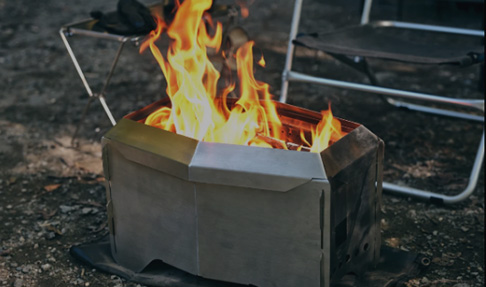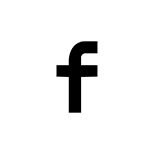Find out more about our news >
EN
A comprehensive guide to purchasing tent stoves from China in 2025
People love camping with friends in cold weather.
This is why tent stoves are in great demand in countries with longer autumn and winter.
They can buy portable products and carry them with you.
They can also cook with a tent wood stove and make the tent warmer.
In addition, they also run several events in their backyard, such as barbecue parties.
Therefore, most sellers think the product is very popular among outdoor enthusiasts.
If you want to sell a tent wood stove, you have two options when planning a purchase.
You can purchase from any other country (such as China), or from your local importer or distributor in your country.
The choice depends on your requirements, budget, and other factors.
However, most buyers prefer to buy tent stoves from China because of their high quality and low price.
If you also decide to buy a portable tent stove from China, then you should analyze the market.
Market analysis can give you a clear idea of which portable tent stove to choose.
What are you waiting for? Come and dive into this article and see how to buy the best tent stove from China
1.Tent stove market analysis: global demand and growth potential
2.The global tent stove market continues to heat up in 2025. Driven by the camping economy, the core market size is expected to exceed 248.32 billion yuan (China). The growth momentum comes from the following aspects:
3. Consumption upgrade: Glamping promotes the demand for high-end stoves, and modular design and lightweight materials (such as titanium alloys) have become the trend.
Policy support: Many places in China have introduced camping economy support policies (such as Shanghai and Xiamen) to encourage campsite construction and equipment export.
Environmental protection demand: Low-emission combustion technology (such as secondary air intake systems) is favored by the European and American markets, and products that meet international standards such as CE and ROHS are more competitive.
3.National market analysis: regional demand differences
4. North American market: occupies the largest share in the world (about 40%), prefers high-power and cold-resistant models (such as -30℃ military furnaces), and pays attention to brand endorsement (such as MSR and Coleman).
European market: Strict environmental protection regulations (such as EU REACH), prefer stainless steel and biomass fuel-compatible designs.
Asian market: China's local demand surged (74% increase in 2024), Japan and South Korea prefer lightweight titanium furnaces, while Southeast Asia focuses on cost-effective carbon steel models.
3. Market share and competitive landscape
The global tent stove market shows a "pyramid structure":
High-end market: MSR, Primus, Winnerwell (US/Swedish brand) dominates, with a unit price of over $500, accounting for 20% of the share.
Mid-range market: Chinese brands (Huofeng, Jinyu, Anluhu) are rising, mainly stainless steel stoves, with a unit price of 150−150−300, accounting for 50% of the share.
Low-end market: Carbon steel and basic models account for the remaining 30%, but gradually shrinks with the tightening of environmental protection policies.
4. Material selection and price comparison
Material Features Price range (2025) Applicable scenarios
Carbon steel Low cost (50−50−100), but prone to rust and heavy Gradually phased out Short-term camping/temporary use
Stainless steel Strong corrosion resistance (304/316L), high cost performance (120−120−300) Mainstream choice Family camping, commercial camping
Titanium alloy Ultra-light (1-2kg), high temperature resistance, high unit price (400−400−800) Main growth force of high-end market Hiking, polar adventure
Note: Stainless steel accounts for 65% of the market share, and titanium alloys have the fastest growth rate (15% annually).
4.How to choose the right supplier?
5.1. Purchase directly from the factory
Advantages: low price (reduced middlemen), flexible customization (supports ODM/OEM), and strict quality control.
Filter criteria:
Complete certification (CE, CSA, ISO 9001).
Capacity guarantee (more than 10,000 units per month).
R&D capabilities (patent technology, extreme environmental testing report).
2. Purchase through trading companies
Applicable scenarios: small batch trial orders, multi-category integration needs.
Notes:
Verify trader-factory partnerships (avoid "purses companies").
Clarify the intermediate costs (usually increase the price by 10%-20%).
6. Key points for importing from China
Customs clearance process:
Required documents: packing list, invoice, certificate of origin,
Tariff cost: The ordinary tax rate is 5%-10%, and the EU may impose anti-dumping duties.
Logistics selection:
Sea freight: suitable for bulk goods
Air freight: the first choice for emergency orders, reaching Europe and the United States in 3-5 days.
7. Successful cases and trend forecasts
Case: German brands customized smoke-free wood stoves through Chinese ODM manufacturers, with annual sales of 200,000 units, ranking on Amazon BSR list.
Trend: In 2025, smart stoves (APP temperature control, thermal power generation) will account for 30% of the high-end market.
Conclusion
As a global tent stove manufacturing center, China has both cost advantages and technological innovation capabilities. Buyers need to select reliable suppliers and strictly control compliance based on target market needs (such as material preferences and certification standards). Through the framework of this article, you can systematically plan procurement strategies and seize the dividends of the camping economy in 2025.





 RELATED MAGAZINE
RELATED MAGAZINE








